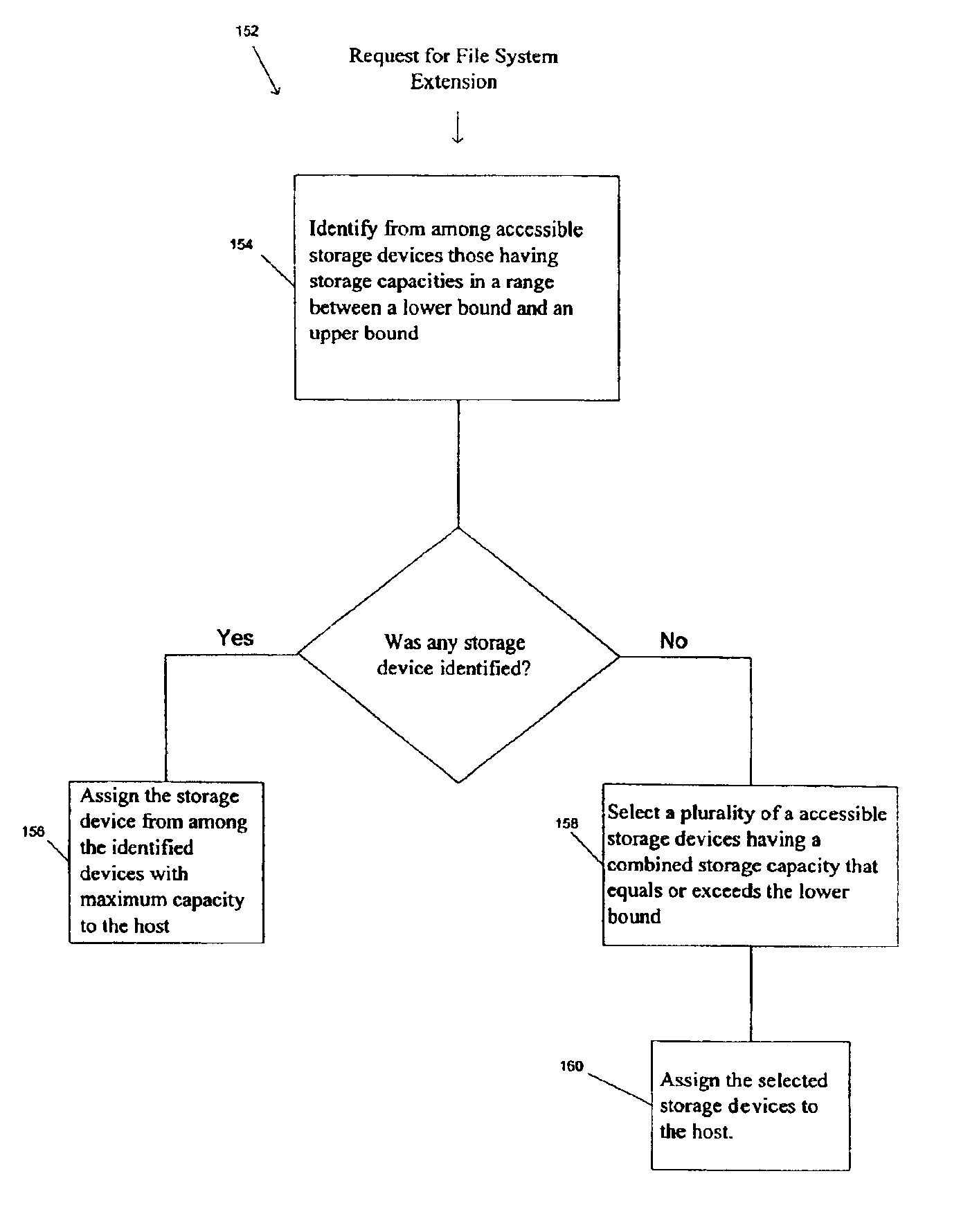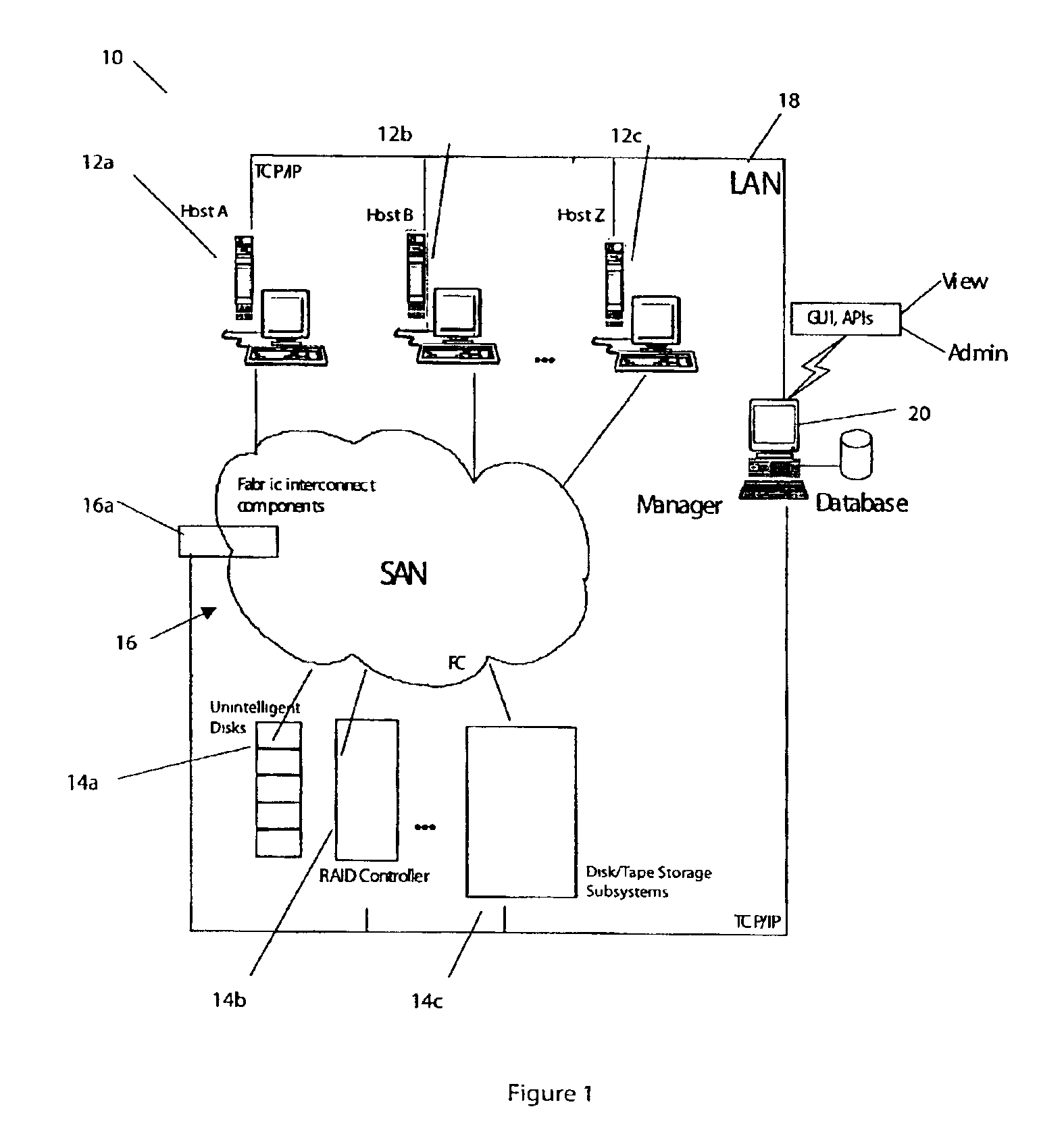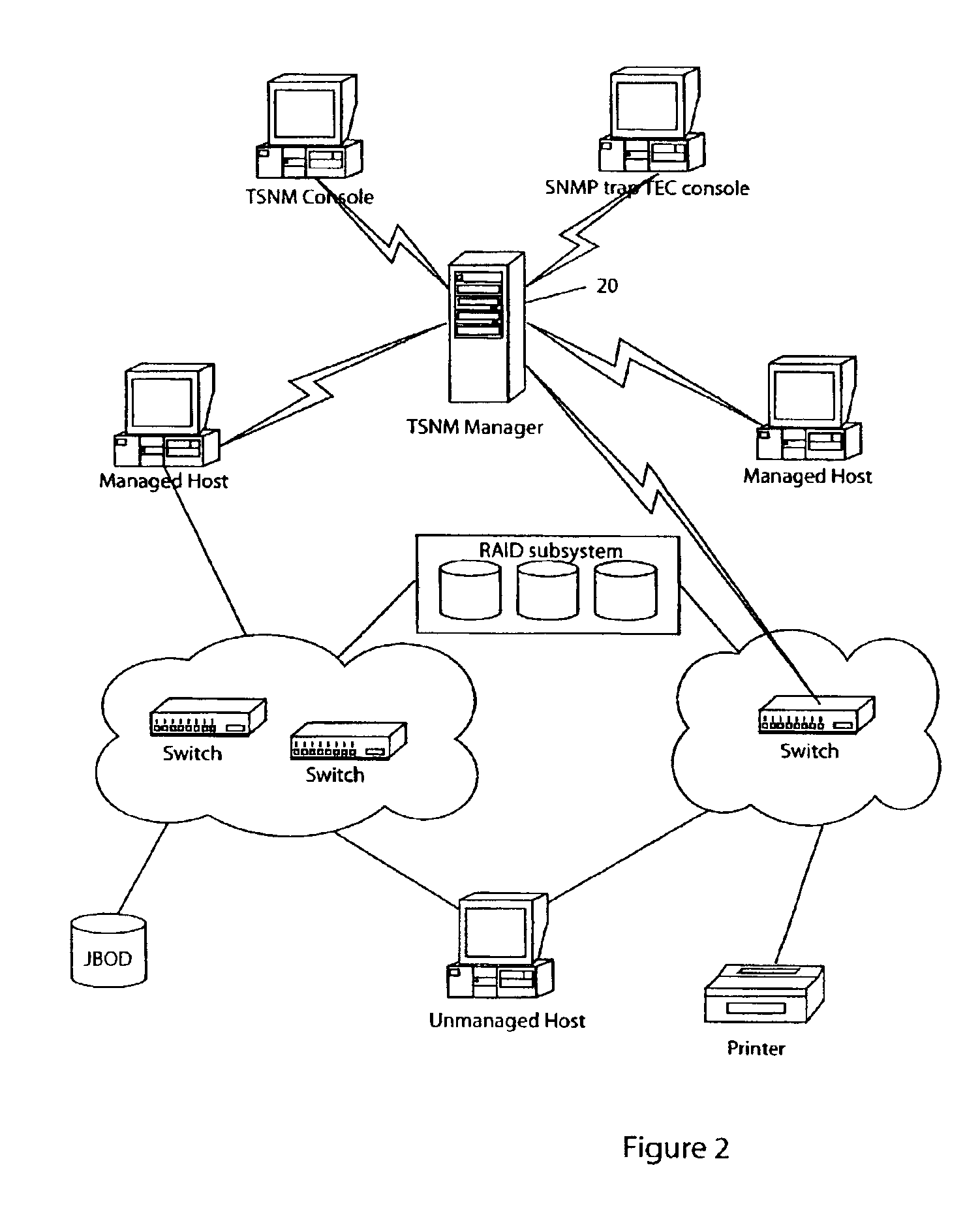Storage area network methods and apparatus for automated file system extension
a file system extension and storage area technology, applied in the field of digital data processing, can solve the problems of zoning or switch-like control, managing the proliferation of hosts and storage devices, etc., and achieve the effect of facilitating access by multiple hosts and without risk of unwanted access conflicts
- Summary
- Abstract
- Description
- Claims
- Application Information
AI Technical Summary
Benefits of technology
Problems solved by technology
Method used
Image
Examples
Embodiment Construction
[0167]The illustrated embodiment provides inter alia for management of a storage area network (SAN) generally having a plurality of hosts that are coupled with one or more storage devices via an interconnect fabric for purposes of storing and retrieving information. The embodiment utilizes a manager and one or more agents, each of the latter being associated with at least one of the hosts and serving as “proxies” for the manager, gathering status, attributes and other such information regarding the hosts, the storage devices, and the interconnect fabric. The manager collates that information to discern the makeup, topology and status of the SAN and its components, to apprise an administrator or other operator of the same (and of changes thereto), and to implement an administrator-defined or other policy, e.g., by way of non-limiting example, for assignment and unassignment of storage devices (e.g., logical units) to the hosts.
[0168]FIG. 1 illustrates an exemplary storage network man...
PUM
 Login to View More
Login to View More Abstract
Description
Claims
Application Information
 Login to View More
Login to View More - R&D
- Intellectual Property
- Life Sciences
- Materials
- Tech Scout
- Unparalleled Data Quality
- Higher Quality Content
- 60% Fewer Hallucinations
Browse by: Latest US Patents, China's latest patents, Technical Efficacy Thesaurus, Application Domain, Technology Topic, Popular Technical Reports.
© 2025 PatSnap. All rights reserved.Legal|Privacy policy|Modern Slavery Act Transparency Statement|Sitemap|About US| Contact US: help@patsnap.com



